


|

|
|
|
|
Application-to-Application Programming Examples
This section provides the following transaction scenarios for the programming environments supported by eLink Adapter for Mainframe:
Caution: The scenarios in this section demonstrate how ATMI calls relate to CICS/ESA programming structures. They are not intended for use in developing application code, or for the replacement of existing application code. The use of any of these examples in actual situations may have unpredictable results.
Each example provides a graphical illustration of the scenario followed by a description of each step of the scenario.
Distributed Program Link (DPL) Examples
The examples in this section represent a few of the many programming scenarios available for using DPL and ATMI service invocations. These examples employ the most natural and efficient approaches.
Note: To run transaction client/server scenarios, the eLink Adapter for Mainframe software must be licensed for sync-level 2 operations.
ATMI Client Request/Response to CICS/ESA DPL
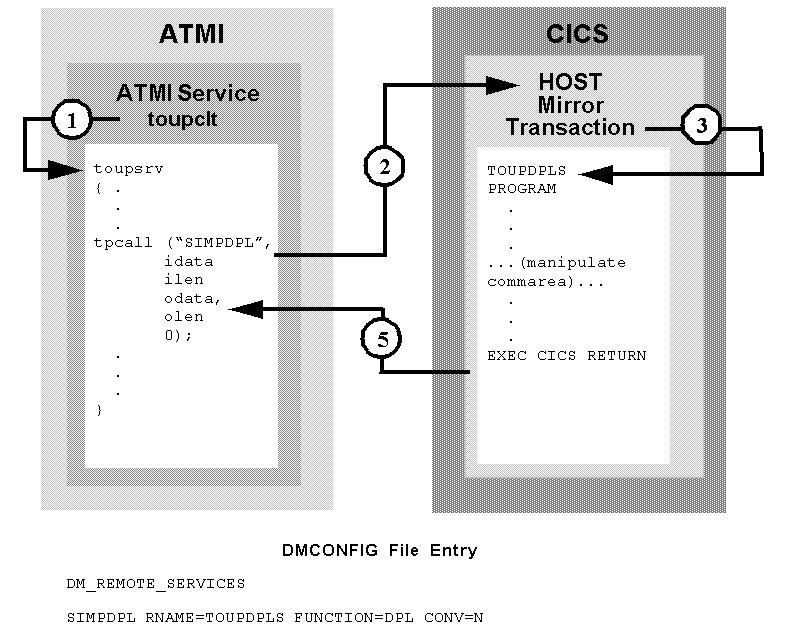
ATMI Client Asynchronous Request/Response to CICS/ESA DPL
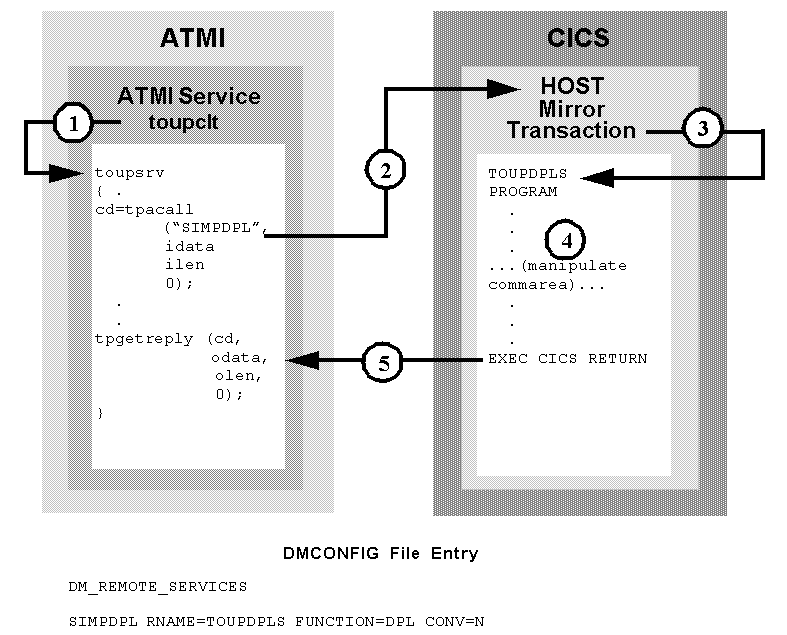
ATMI Client Asynchronous Request/Response with No Reply to CICS/ESA DPL
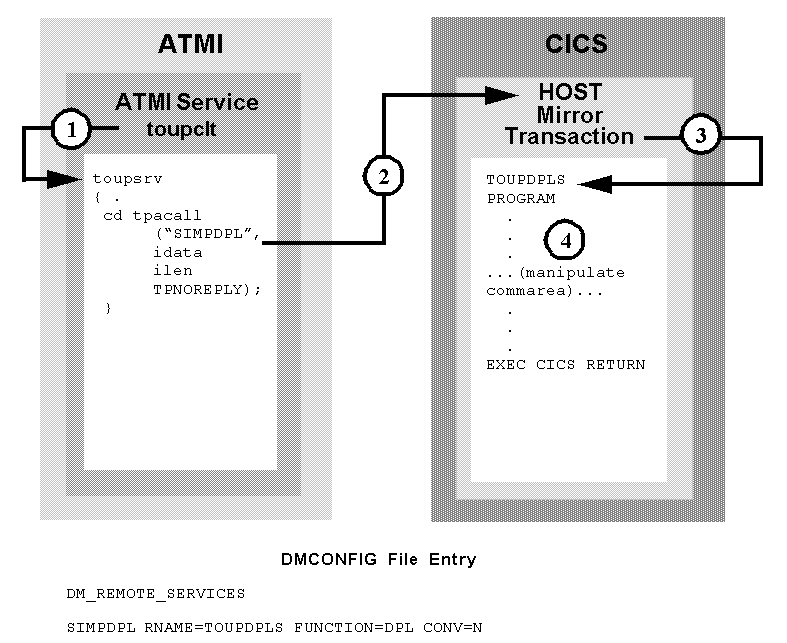
CICS/ESA DPL to ATMI Request/Response Server

CICS/ESA DPL to ATMI Request/Response Server, Service in Autonomous Transaction
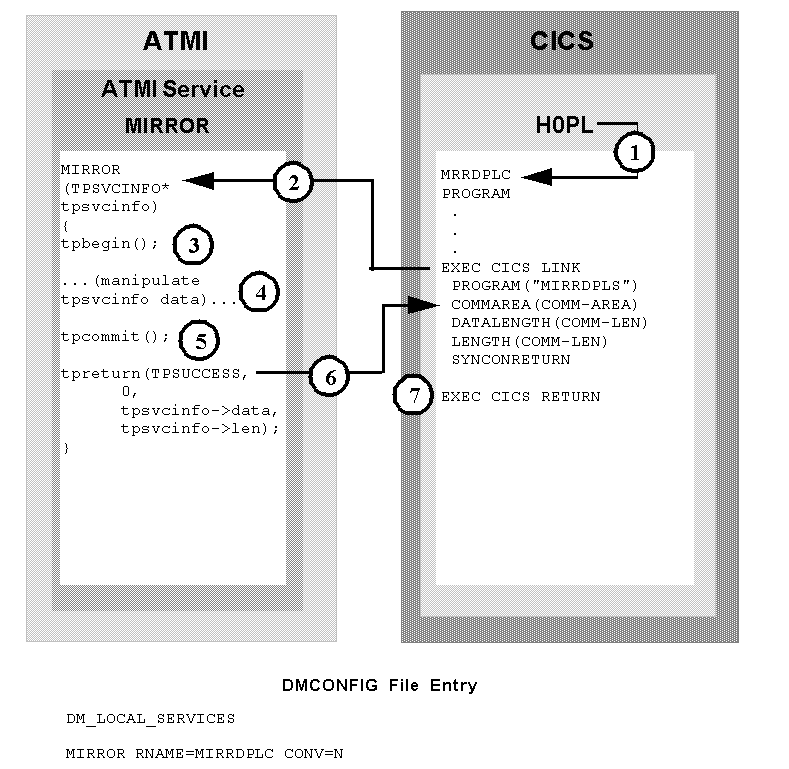
ATMI Client Request/Response to CICS/ESA DPL, Autonomous Transaction
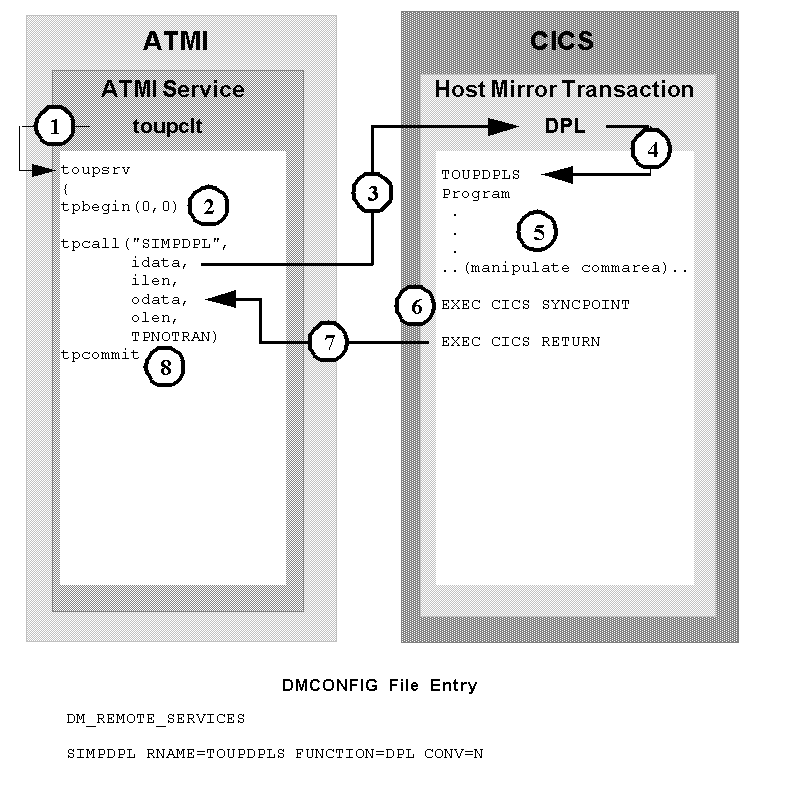
Transactional ATMI Client Multiple Requests/Responses to CICS/ESA DPL
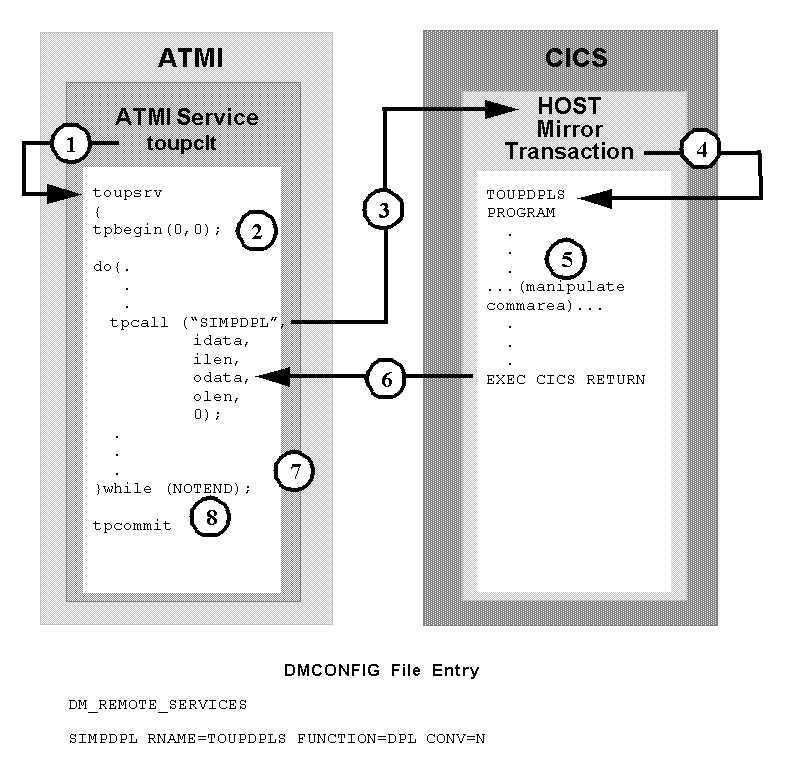
Transactional CICS/ESA DPL to ATMI Request/Response Server
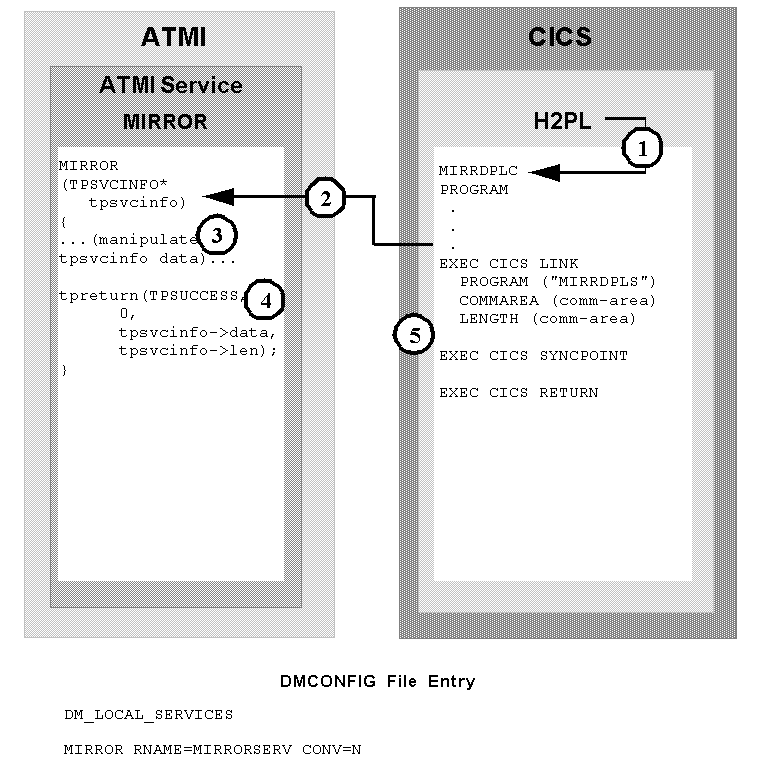
Distributed Transaction Processing (DTP) Examples
The following examples represent programming scenarios for using DTP and ATMI service invocations.
Although it is most suited for the DPL environment, the tpcall is usually used for the DPL environment, it can also be used for a request/response to a DTP server.
The examples in this section represent some of the programming scenarios available for using DTP and ATMI service invocations. These examples employ the most natural and efficient approaches.
Note: To run transactional client/server scenarios, the eLink Adapter for Mainframe software must be licensed for sync-level 2 operations.
ATMI Client Request/Response to CICS/ESA DTP
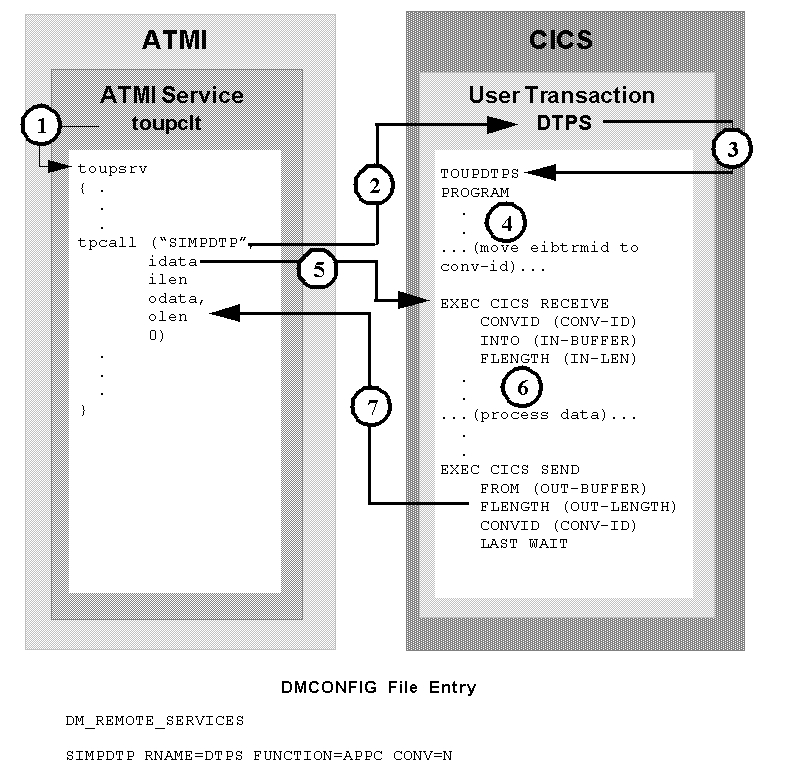
ATMI Client Asynchronous Request/Response to CICS/ESA DTP
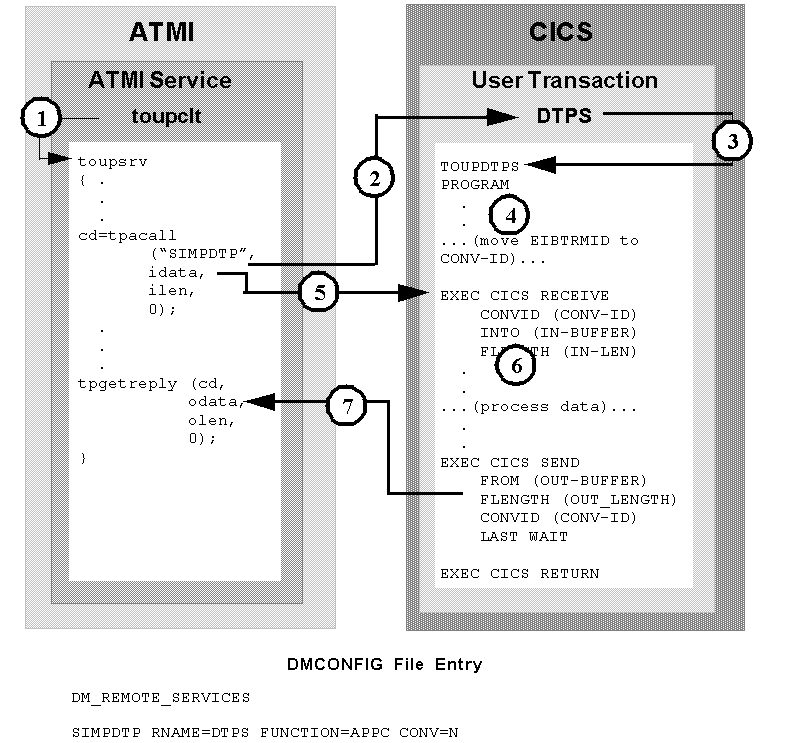
ATMI Client Asynchronous Request/Response with No Reply to CICS/ESA DTP
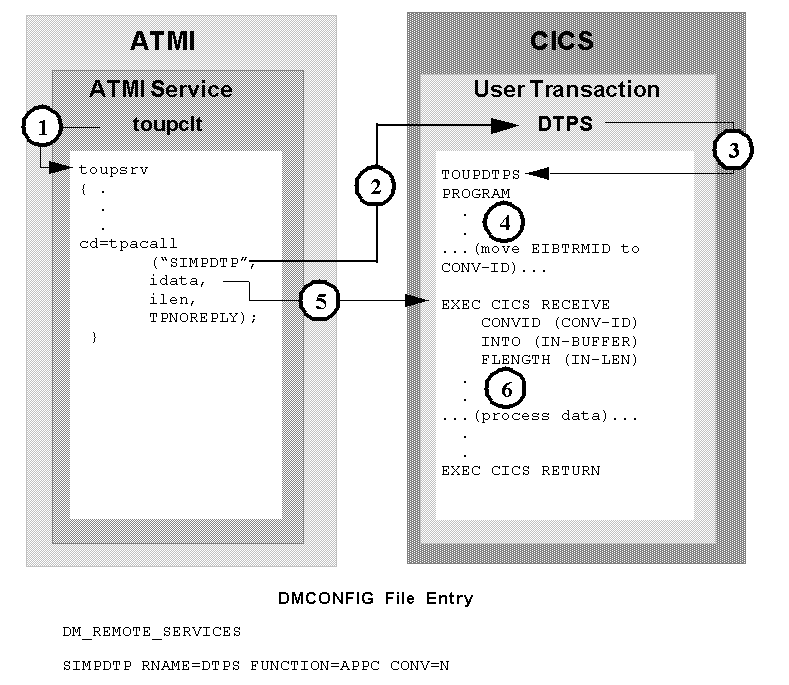
ATMI Conversational Client to CICS/ESA DTP, Server Gets Control

ATMI Conversational Client to CICS/ESA DTP, Client Sends/Receives Data
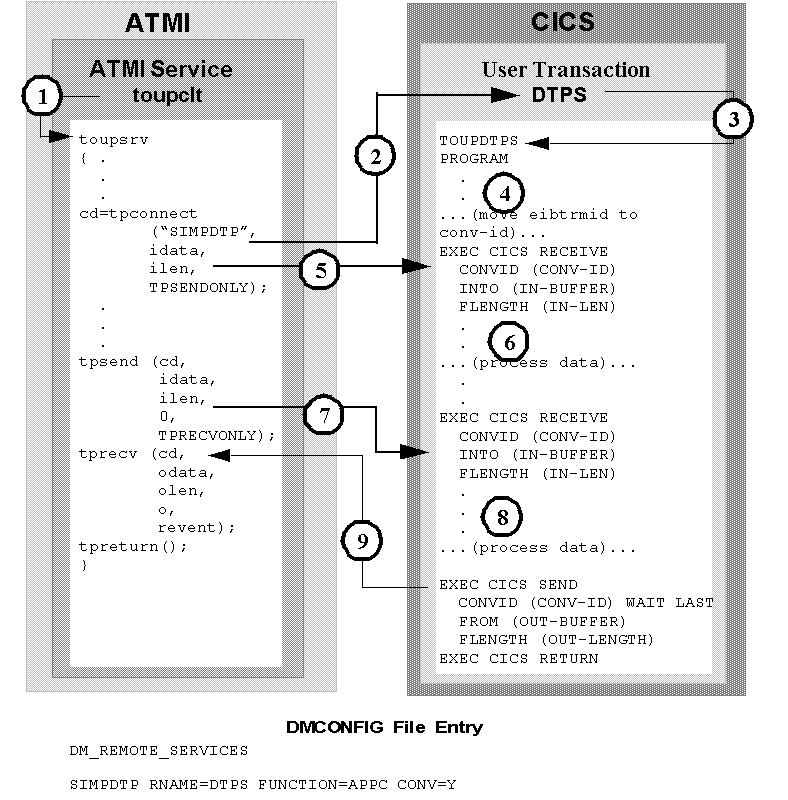
ATMI Conversational Client to CICS/ESA DTP, Client Grants Control
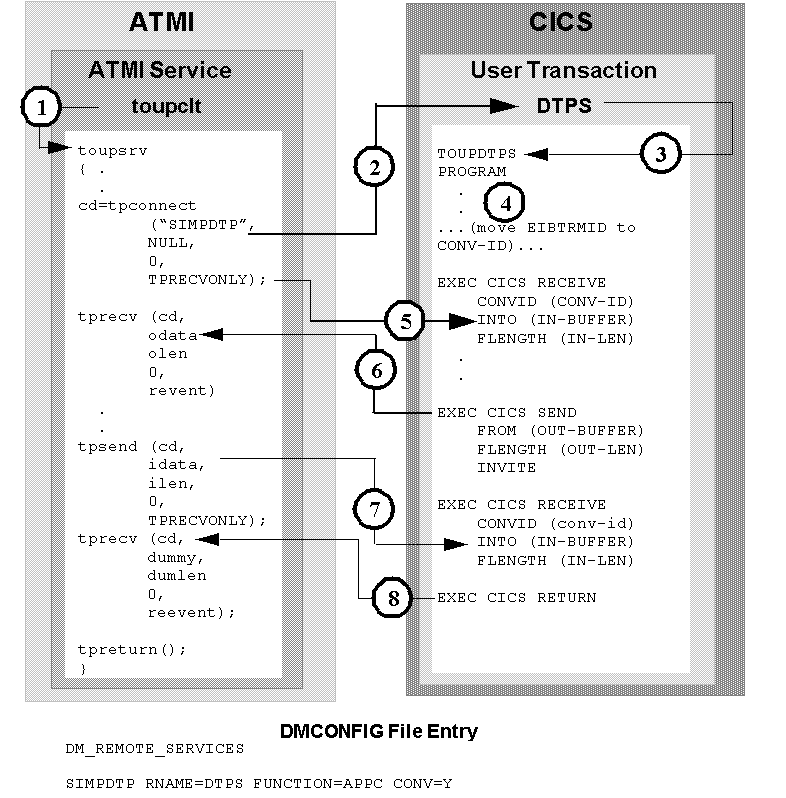
CICS/ESA DTP to ATMI Conversational Server, Client Retains Control
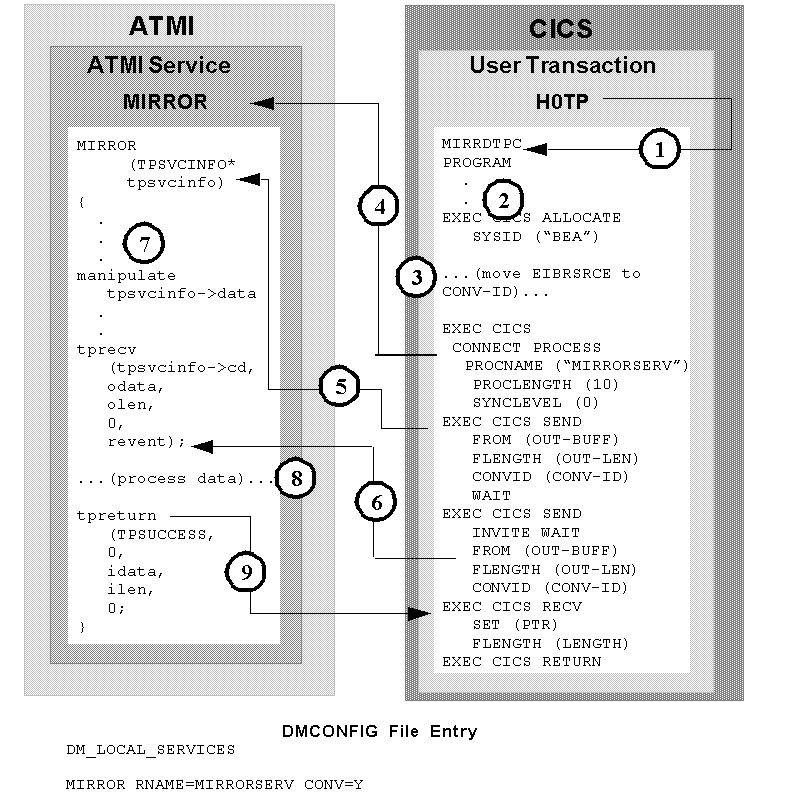
CICS/ESA DTP to ATMI Conversational Server, Client Relinquishes Control
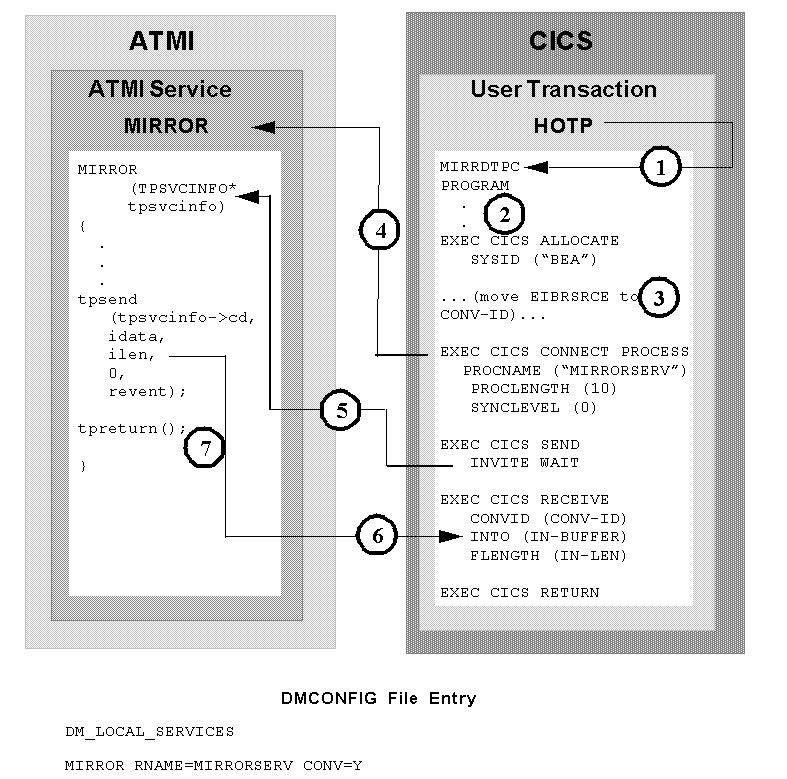
Transactional ATMI Client Request/Response to CICS/ESA DTP
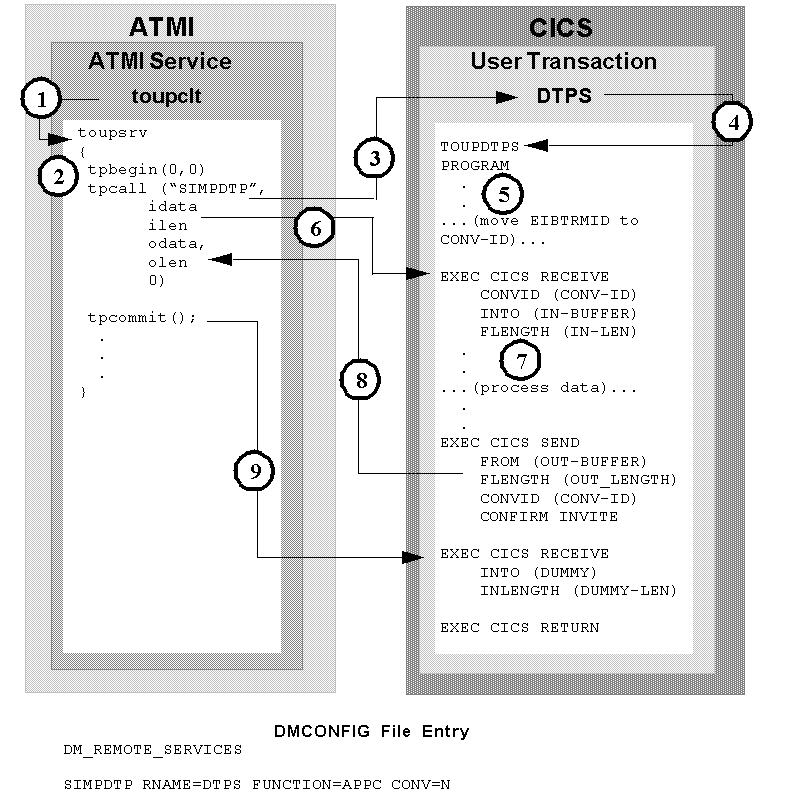
Note: This is not the recommended method of performing a DTP transactional service. Please refer to the transactional DPL using request/response for the recommended method.
Transactional ATMI Conversational Client to CICS/ESA DTP, Server Gets Control
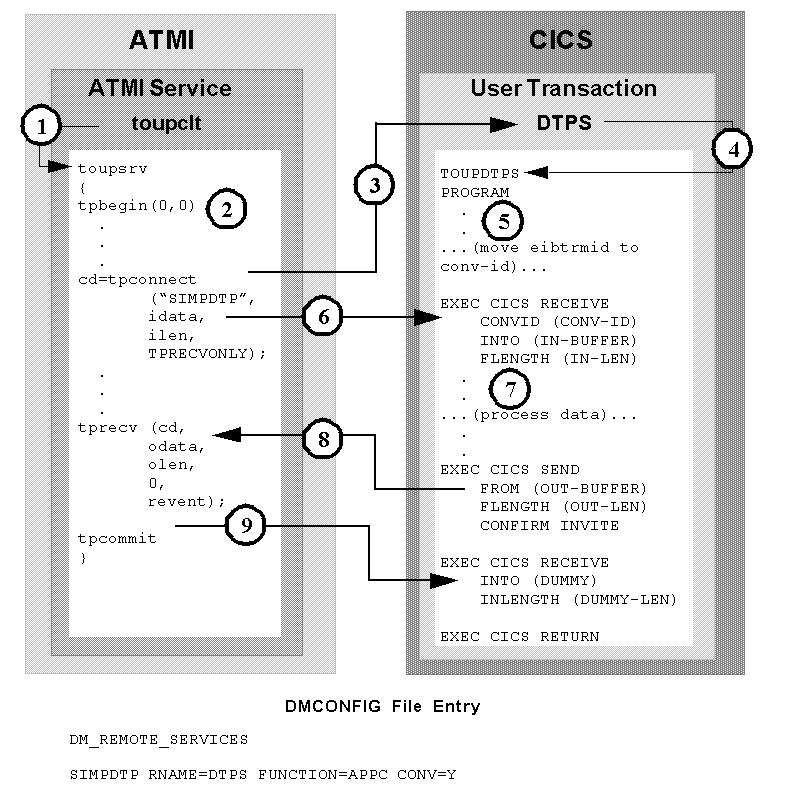
Transactional CICS/ESA DTP to ATMI Conversational Server, Host Client Relinquishes Control
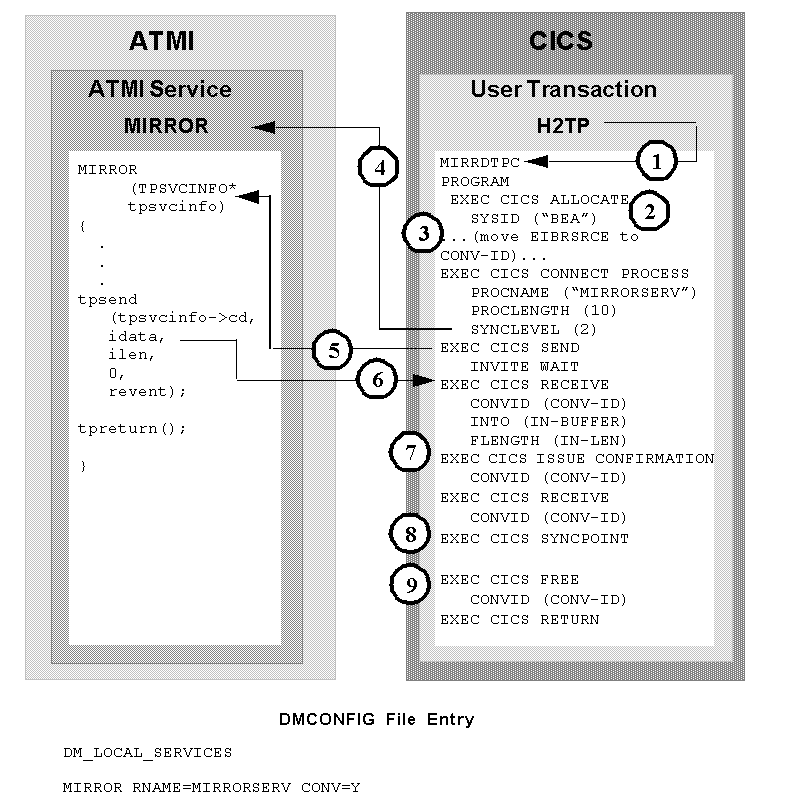
CPI-C Programming Examples
The examples in this section show the protocol exchanges between the local ATMI platform and remote host application program. The type of ATMI service request determines the nature of the client/server communication model. For requests initiated by the host application, the configuration information for the local service determines the protocol exchanges on the conversation.
Although it is most suited for the DPL environment, the tpcall is usually used in the DPL environment but can also be used for a request/response to an APPC server.
The examples in this section represent a few of the many programming scenarios available for using CPI-C and ATMI service invocations. These examples employ the most natural and efficient approaches.
Note: To run transactional client/server scenarios or the CPI Resource Recovery interface, the eLink Adapter for Mainframe software must be licensed for sync-level 2 operations.
ATMI Client Request/Response to Host CPI-C
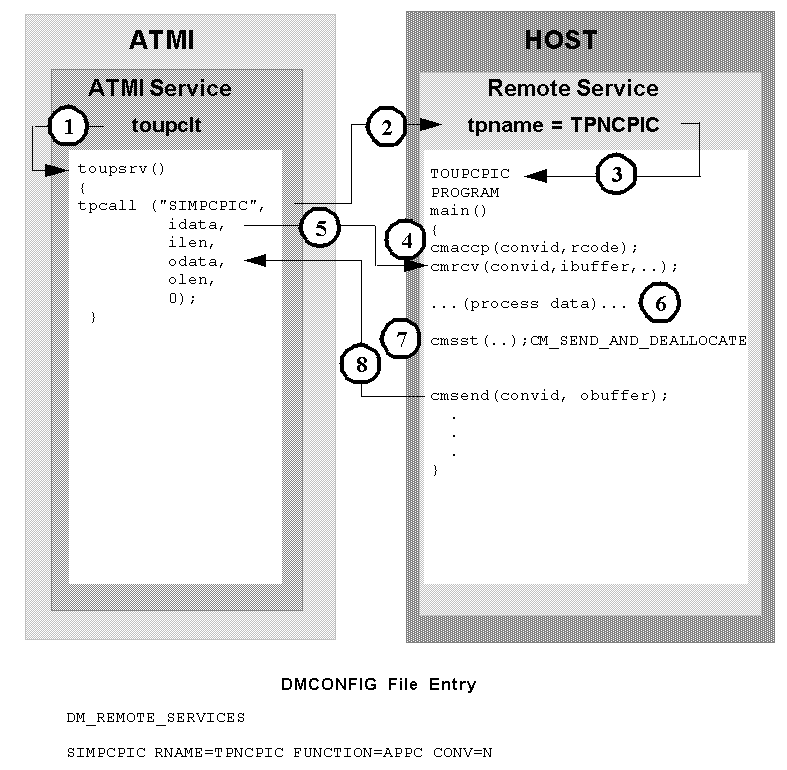
ATMI Client Asynchronous Request/Response to Host CPI-C
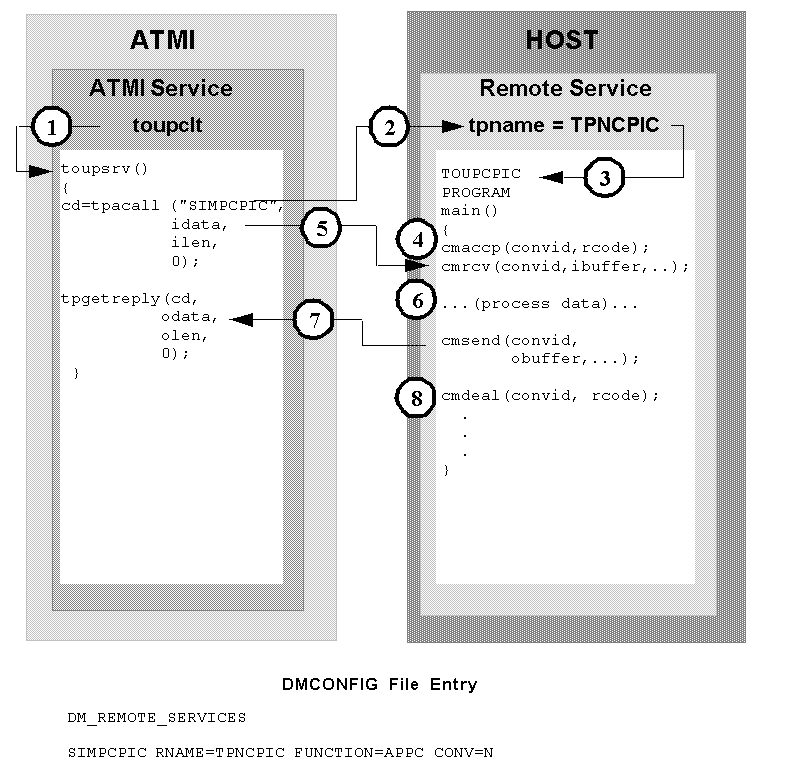
ATMI Client Asynchronous Request/Response to Host CPI-C with No Reply

ATMI Conversational Client to Host CPI-C, Server Gets Control
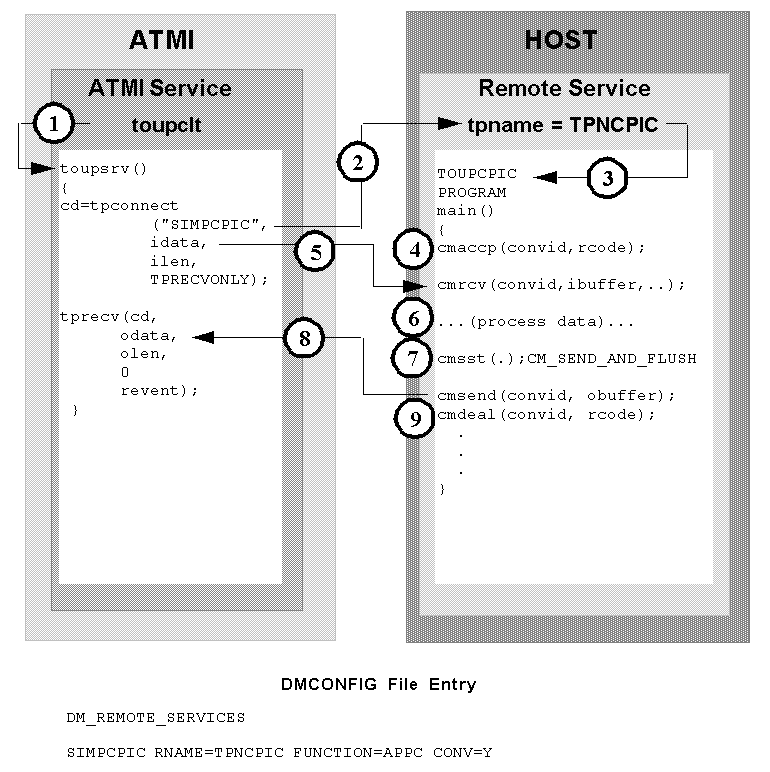
ATMI Conversational Client To Host CPI-C, Client Retains Control
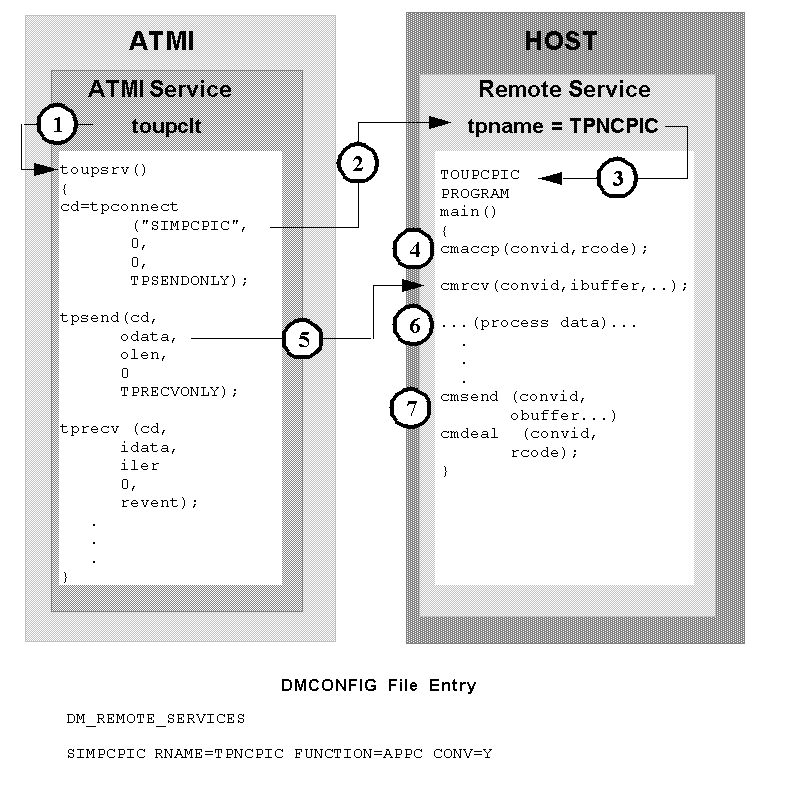
ATMI Conversational Client to Host CPI-C, Client Grants/gets Control
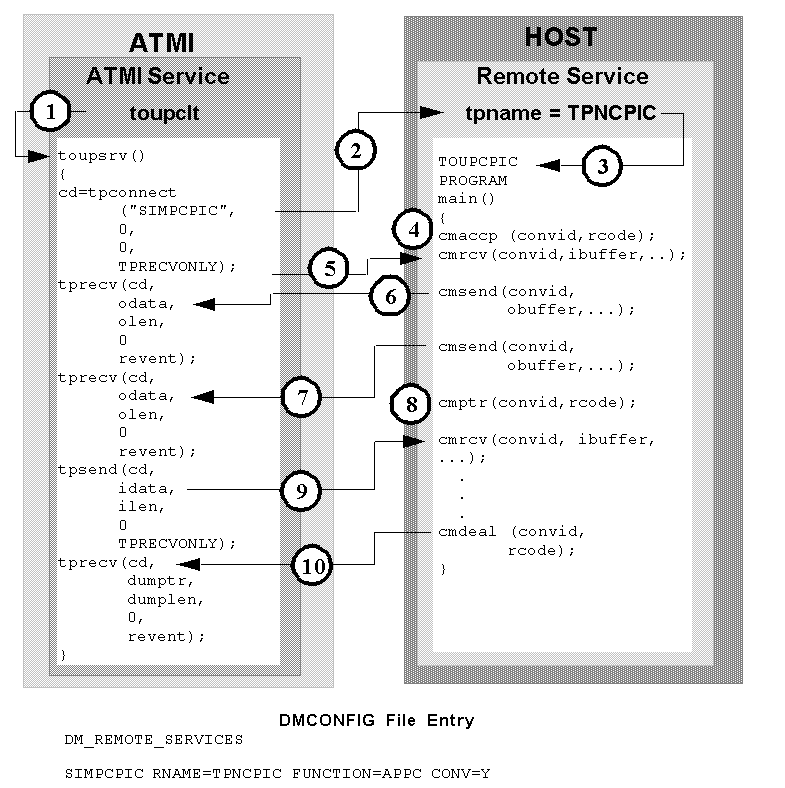
Host CPI-C to ATMI Asynchronous Request/Response Server with No Reply
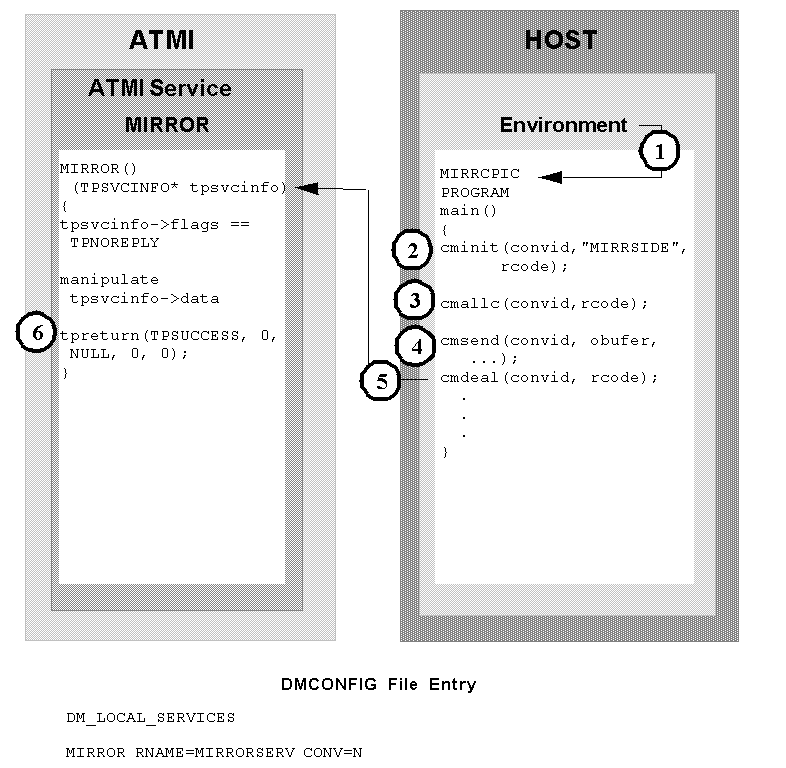
Host CPI-C to ATMI Server Request/Response
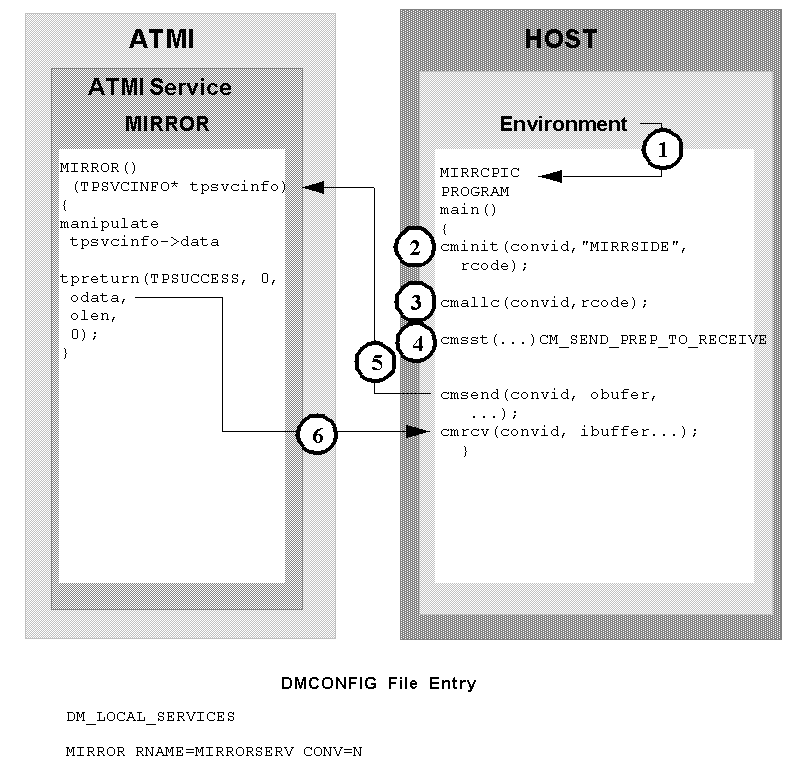
Host CPI-C to ATMI Conversational Service, Client Retains Control
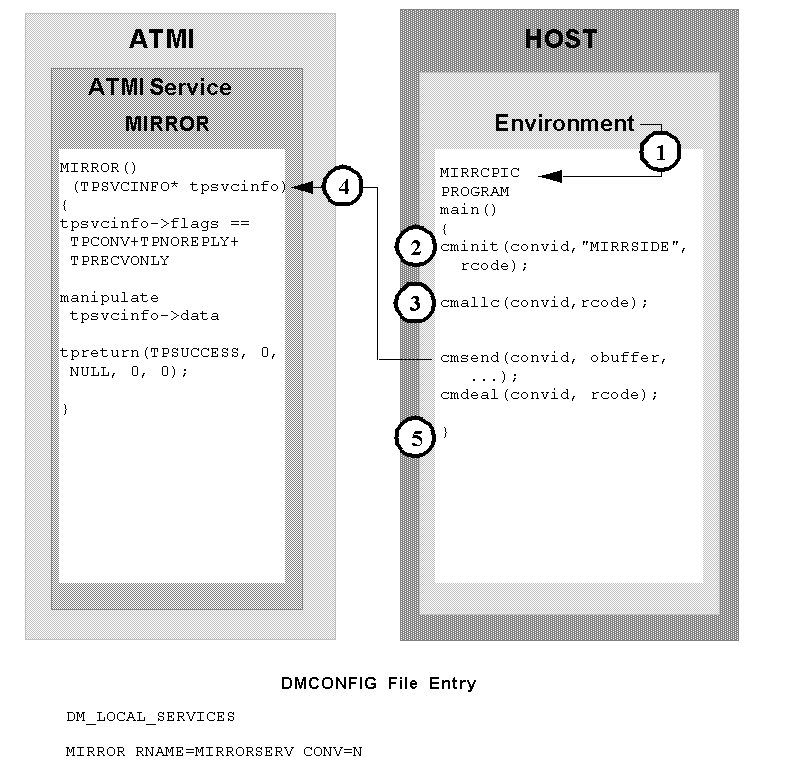
Host CPI-C ATMI to Conversational Service, Client Grants Control
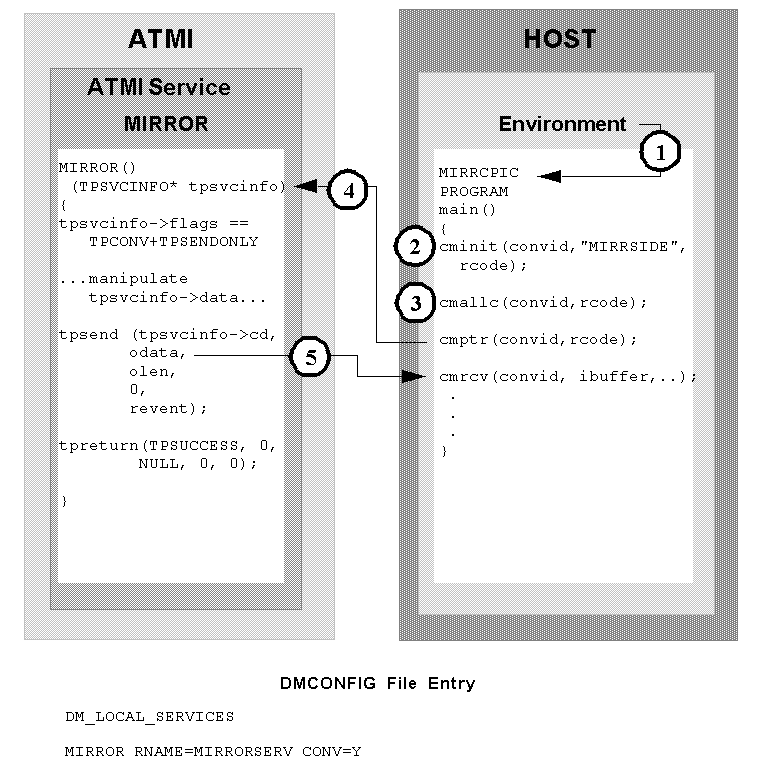
Transactional ATMI Client Request/Response to Host CPI-C
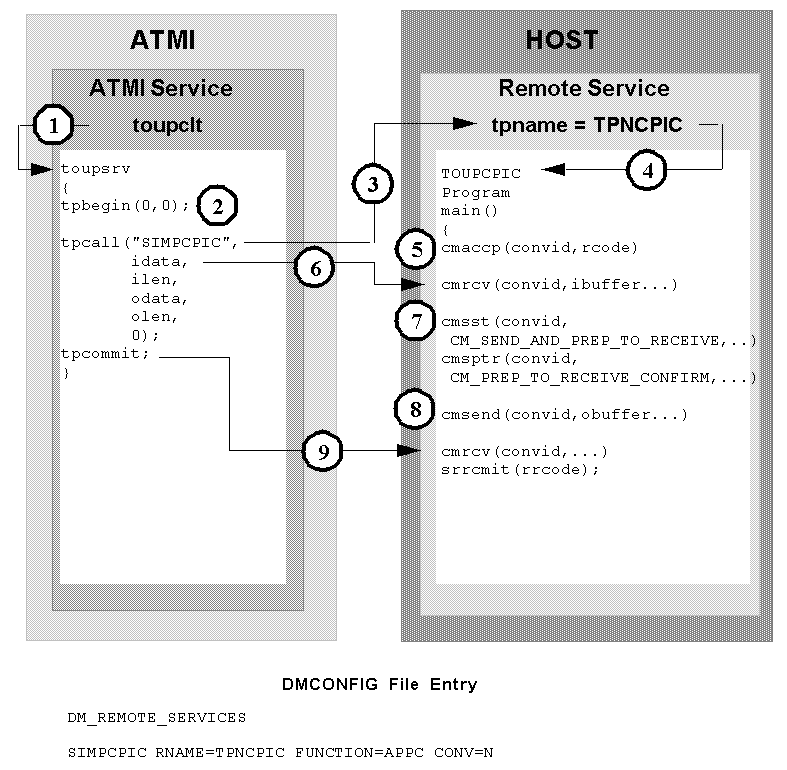
Transactional ATMI Conversational Client to Host CPI-C, Server Gets Control

Transactional Host CPI-C to ATMI Conversational Server, Client Grants Control
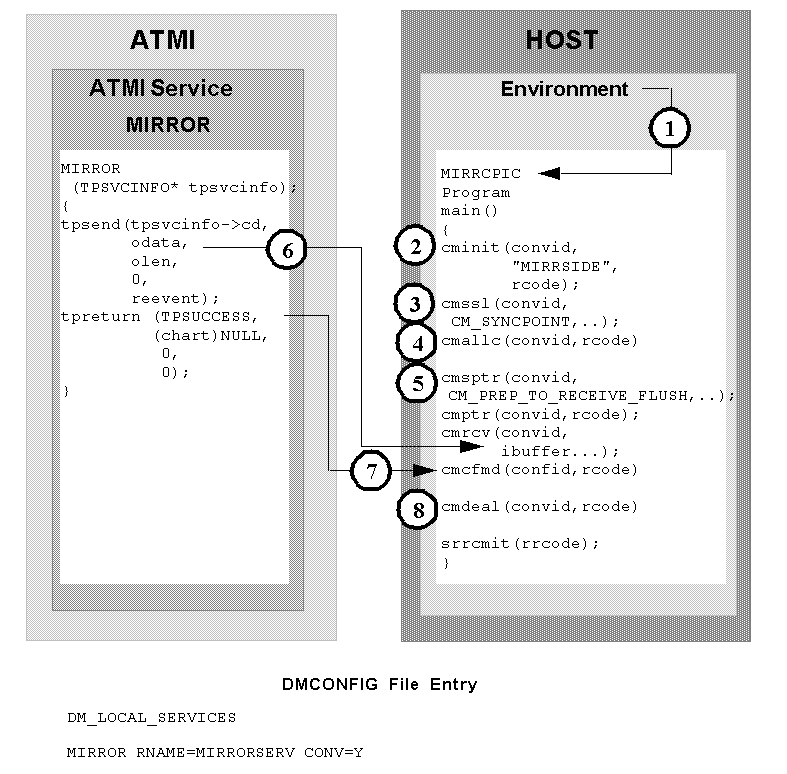
CICS/ESA Mirror Transaction Examples
Implicit Attachment of TRANSID (Outbound Requests Only)
Figure 2-1 Implicit Attachment of TRANSID (Outbound Requests Only)
The following list describes the process for implicit attachment as illustrated in Figure2-1: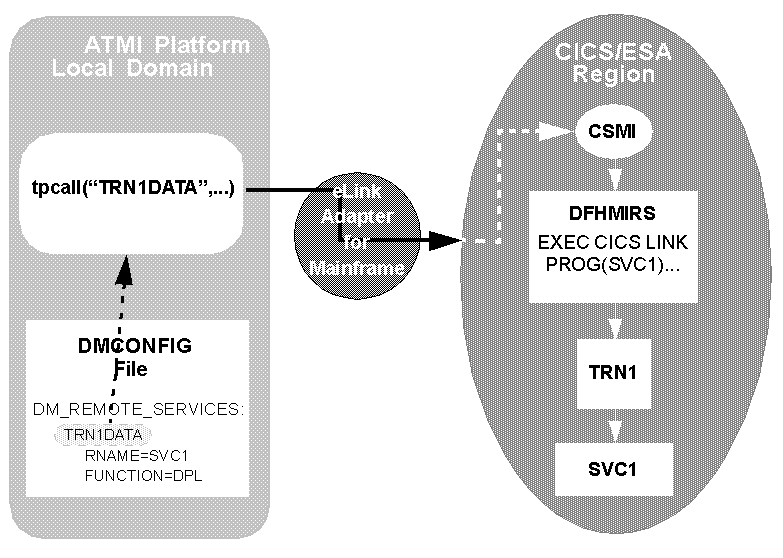
Explicit Attachment of TRANSID for Outbound Requests
Figure 2-2 Explicit Attachment of TRANSID for Outbound Requests
The following list describes the process for explicit attachment as illustrated in Figure2-2:
Explicit Attachment of TRANSID for Inbound Requests
Figure 2-3 Explicit Attachment of TRANSID for Inbound Requests
The following list describes the process for implicit attachment as illustrated in Figure2-3: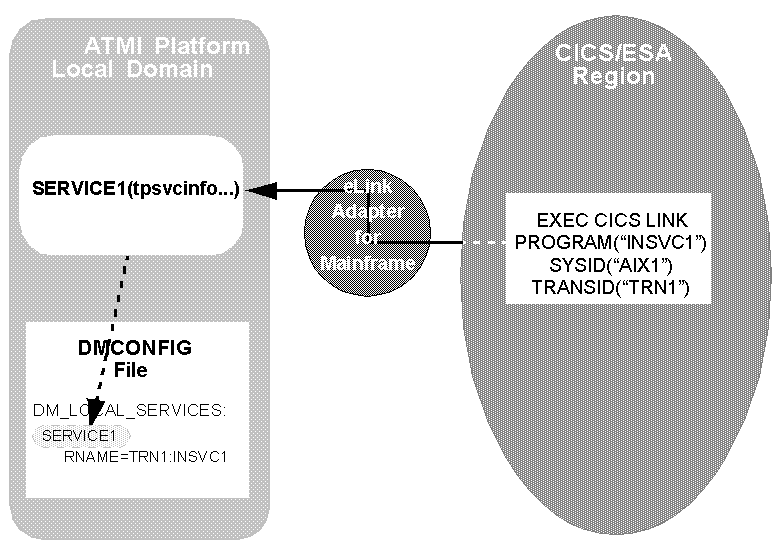
Additional Information
Additional information about CICS/ESA Intersystem Communications may be found in the following IBM publications:

|

|

|
|
|
|
Copyright © 2001 BEA Systems, Inc. All rights reserved.
|